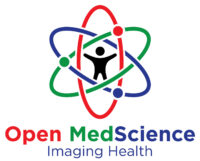The healthcare industry is facing a serious cybersecurity challenge that goes beyond just protecting patient records. With half of healthcare organizations hit by ransomware last year, many experienced downtime lasting almost five days, a time when patient care can be seriously affected. While IT security often gets the spotlight, operational technology (OT), the systems controlling medical devices and building operations, is largely overlooked.
Shockingly, more than three-quarters of healthcare providers don’t budget for OT security, leaving a big gap that hackers can exploit. This blog digs into these hidden OT risks and why fixing them is critical for keeping healthcare safe and reliable.
High-Impact OT Security Risks in Healthcare Environments
The convergence of IT and OT creates unique challenges that extend far beyond data theft. When critical healthcare systems are compromised, the consequences can directly affect patient safety and care delivery capabilities, making medical device security an urgent priority.
Physical Safety Implications of OT Breaches
Unlike traditional IT security incidents, ot cybersecurity breaches in healthcare settings can have immediate physical impacts. Tampering with medical device settings or calibration could directly harm patients dependent on those systems.
Attackers could potentially disrupt critical life support systems or manipulate medication dispensing machines, creating dangerous situations for vulnerable patients. Environmental controls in sensitive areas like operating rooms or isolation units rely on properly functioning OT systems. Disruption to these controls could create unsafe temperature conditions or air quality issues. Healthcare IT security incidents targeting these systems represent a fundamental threat to patient safety.
Operational Continuity Threats
Beyond direct patient harm, OT security incidents can severely impact a facility’s ability to deliver care. Emergency departments facing system outages may struggle to triage and treat patients effectively. Surgical procedures might be delayed or canceled when supporting systems fail, and diagnostic equipment calibration could be compromised.
Supply chain disruptions resulting from OT breaches can impact medication availability and inventory management. In worst-case scenarios, cascading failures across interconnected systems could force temporary facility closures, as we’ve seen in several high-profile ransomware attacks targeting healthcare providers.
The Cybersecurity Maturity Gap in Healthcare OT
Understanding the severity of these risks highlights a troubling reality about the current state of healthcare cybersecurity. Despite growing threats, most organizations remain underprepared to address the unique challenges of securing operational technology.
Outdated OT Security Models in Healthcare
Many healthcare organizations still rely heavily on physical security and perceived network isolation to protect critical OT systems. This “security through obscurity” approach assumes specialized systems are inherently difficult to breach, but this assumption doesn’t hold up against modern threat actors who specifically target these vulnerabilities.
Most healthcare IT teams lack specific expertise in OT security risks, creating a dangerous knowledge gap. Without proper visibility into OT asset inventories, organizations cannot effectively secure systems they don’t know exist or understand. The challenges with patching and updating medical OT systems further complicate security efforts, as many vendors restrict updates or require specialized procedures.
Regulatory Blind Spots and Compliance Challenges
Current healthcare regulations focus heavily on data privacy rather than operational security. HIPAA requirements primarily address patient information protection but provide limited guidance on securing the operational systems that deliver care.
Similarly, FDA guidance on medical device security doesn’t comprehensively address the broader OT ecosystem. This regulatory landscape leaves significant gaps in critical infrastructure protection for healthcare.
Risk assessment models designed for traditional IT environments often fail to capture the unique vulnerabilities and consequences of OT security failures, leaving organizations without proper frameworks to evaluate their security posture.
Advanced Threat Vectors Targeting Healthcare OT
With an understanding of the regulatory and maturity gaps, healthcare organizations must recognize the sophisticated threats specifically targeting their operational technology. Modern attackers use increasingly sophisticated techniques to compromise these critical systems.
Sophisticated Attack Methodologies
Threat actors employ supply chain compromise through third-party vendors to gain initial access to healthcare networks. From these entry points, they can move laterally from IT networks to OT systems by exploiting trust relationships between connected systems.
Once inside, attackers may use living-off-the-land techniques that leverage legitimate tools already present in the environment. Firmware manipulation represents a particularly concerning attack vector, as it can create persistent access that survives traditional remediation efforts.
The emergence of AI-driven attacks against healthcare IT security infrastructure further compounds these challenges, as automated systems can identify vulnerabilities faster than human defenders can patch them.
Nation-State and Advanced Persistent Threat Interest
Healthcare infrastructure has become a target of strategic interest for nation-state actors and advanced persistent threats. These sophisticated attackers may conduct long-term intelligence gathering before launching disruptive attacks.
Documented APT campaigns targeting healthcare OT demonstrate the reality of this threat.
The geopolitical motivations behind these attacks continue to evolve, making the future threat landscape increasingly complex. Public-private partnerships and intelligence sharing become essential components of an effective defense strategy against these advanced adversaries.
Strengthening Defense with Integrated IT and OT Security Strategies
To effectively combat these advanced threats, healthcare organizations must break down the silos between IT and OT security teams. Integrated security strategies enable real-time visibility across all systems, helping to identify and respond to threats more quickly. Implementing unified monitoring platforms that combine IT and OT data streams provides a clearer picture of network activity and potential vulnerabilities.
Building a Proactive OT Security Culture in Healthcare
Addressing OT security risks in healthcare isn’t just about technology—it’s about people and processes. Organizations must foster a culture where operational technology security is a shared responsibility across all departments.
Regular training for clinical staff, IT teams, and leadership ensures everyone understands the risks and knows how to respond effectively. Collaboration between clinical engineers, cybersecurity experts, and executives can drive proactive risk management and faster incident response.
Investing in continuous monitoring tools and threat intelligence specific to healthcare OT can help detect anomalies before they escalate. By embracing a proactive, unified approach, healthcare providers can move from reactive defense to resilient security, safeguarding patient safety and care quality for years to come.
FAQs
1. What makes OT security different from traditional IT security in healthcare?
OT security focuses on systems that control physical processes and equipment rather than just data. These systems often have real-time requirements, extended lifecycles (10-20 years), and direct physical impacts when compromised, making traditional IT security approaches insufficient.
2. How can resource-constrained healthcare organizations improve OT security?
Start with a comprehensive asset inventory to understand what needs protection. Implement network segmentation to isolate critical systems, develop incident response plans specifically for OT disruptions, and leverage free resources like CISA’s assessment tools for healthcare facilities.
3. Which OT systems typically present the highest risk in healthcare environments?
Life support systems, medication dispensing equipment, and building management systems controlling critical environmental conditions typically present the highest risks, as their compromise could directly impact patient safety.
Disclaimer
The information provided in this article, Examining Overlooked OT Security Risks in the Healthcare Industry, is intended for general informational purposes only. Open Medscience does not provide legal, medical, or cybersecurity advice, and the content should not be interpreted as such. While every effort has been made to ensure the accuracy and relevance of the information presented, readers are encouraged to consult qualified professionals for specific guidance tailored to their organisation’s circumstances.
Open Medscience is not liable for any actions taken or not taken based on the contents of this publication. The views expressed are those of the author(s) and do not necessarily reflect those of any affiliated institutions, partners, or contributors. References to specific technologies, vendors, or incidents are for illustrative purposes only and do not constitute endorsement.
Cybersecurity is a rapidly evolving field. Readers should stay informed of emerging threats and evolving best practices through trusted, up-to-date sources.
You are here: home » diagnostic medical imaging blog »



